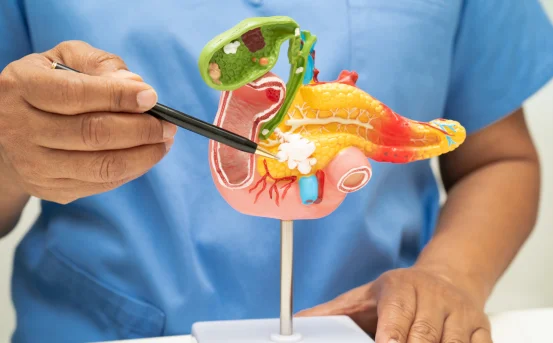Introduction
Pancreas transplant surgery is a complex but potentially life-changing procedure performed to restore insulin production in individuals with severe diabetes, particularly Type 1 diabetes. This surgery can improve blood sugar control and reduce or eliminate the need for insulin injections. It may also help prevent or reverse some diabetes-related complications, such as kidney disease or nerve damage. The decision to undergo a pancreas transplant depends on multiple factors, including the overall health of the patient, severity of diabetes, and presence of other comorbid conditions.
Types of pancreas transplant surgery are Pancreas Transplant Alone (PTA), performed for patients with severe diabetes but normal kidney function; Simultaneous Pancreas-Kidney Transplant (SPK), typically for patients with diabetes and kidney failure; and Pancreas-After-Kidney Transplant (PAK), where a pancreas is transplanted after a previous kidney transplant. Each type is chosen based on the patient’s overall health and organ function. Understanding the various types of pancreas transplant surgery is crucial for patients considering this life-changing option.
Types of Pancreas Transplant Surgery
- Simultaneous Pancreas-Kidney Transplant (SPK)
This is the most common type of pancreas transplant and is usually performed on patients who have both Type 1 diabetes and end-stage kidney disease. Both the pancreas and kidney are transplanted from the same deceased donor, during a single surgical procedure. SPK offers the advantage of minimizing the risk of organ rejection, since both organs come from the same donor, and it allows patients to avoid dialysis while gaining improved glucose control. It is typically recommended when kidney failure is imminent or has already occurred. - Pancreas-After-Kidney Transplant (PAK)
This type of transplant is done in two separate stages. First, the patient receives a kidney transplant, either from a living or deceased donor. After recovering from that procedure and when a suitable pancreas donor becomes available, the patient undergoes the pancreas transplant. This option is suitable for patients who have already had a kidney transplant and want to eliminate their dependence on insulin. Although PAK is effective, it carries a slightly higher risk of pancreas graft rejection compared to SPK, since the organs come from different donors. - Pancreas Transplant Alone (PTA)
In certain cases, a patient with brittle Type 1 diabetes but no kidney disease may be eligible for a pancreas transplant alone. PTA is considered for individuals with frequent episodes of severe hypoglycemia, despite good medical management. While this surgery can normalize blood glucose levels, it is used more selectively due to the risks associated with lifelong immunosuppression. The benefits must clearly outweigh the risks before a patient is considered for PTA. - Islet Cell Transplantation
This is a less invasive and more experimental form of pancreas transplantation. Instead of transplanting the whole pancreas, only the islet cells the clusters of cells that produce insulin are isolated from a donor pancreas and infused into the patient’s liver through the portal vein. The cells then settle in the liver and begin to produce insulin. Although promising, islet cell transplantation is not widely available and is still largely part of clinical research due to challenges in maintaining long-term insulin independence. - Segmental Pancreas Transplantation
In rare cases, a portion of the pancreas, such as the tail or body of the organ, may be transplanted instead of the entire pancreas. This may be used in research settings or when organ supply is limited. It is technically more complex and less commonly performed.
Conclusion
Pancreas transplant surgery has evolved into a highly specialized field aimed at providing better quality of life and glucose control for patients with severe diabetes. The type of transplant recommended whether it’s combined with kidney transplantation or performed alone depends on the individual’s medical history, kidney function, and severity of symptoms. Simultaneous pancreas-kidney transplantation remains the most commonly performed and most successful type, offering dual benefits. Pancreas-alone and pancreas-after-kidney procedures serve as valuable options for specific cases, while islet cell transplantation offers hope for the future of minimally invasive treatment.
Each type of pancreas transplant surgery has its own indications, advantages, and risks. Understanding these types is essential for both patients and families making informed decisions about surgical intervention. The ultimate goal is not only to improve survival but also to enhance the quality of life by achieving insulin independence and reducing diabetes-related complications.























